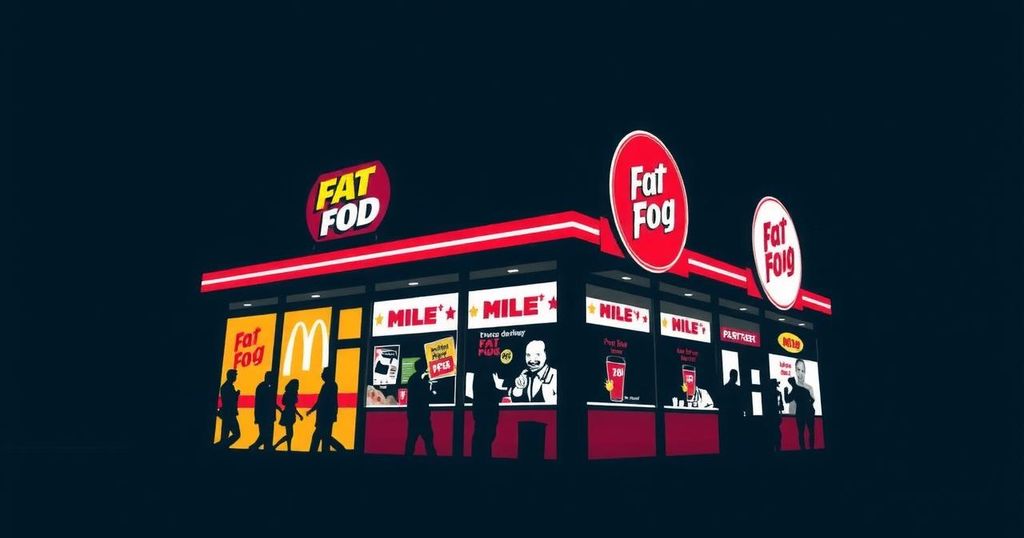In response to a decline in consumer spending, prominent fast-food chains such as KFC, McDonald’s, and Haidilao are increasingly adopting a small-store model, particularly in lower-tier cities across China. This strategic move aims to capture consumer interest amidst a challenging economic landscape marked by a shift toward value-oriented dining experiences.
Every morning at approximately 10 a.m., Tommy Zhang, a medical researcher in Shenzhen, observes the bustling scene that unfolds as commuters flock to a food stall featuring prominently the KFC brand. Situated in a busy college town, this stall has become a favored spot for breakfast takeaways, demonstrating KFC’s effective engagement with local foot traffic. Mr. Zhang comments on the stall’s apparent success, attributing it to the convenience it offers to busy workers in the vicinity.
The proliferation of such small-format food stalls is not unique to KFC; McDonald’s has also begun to establish kiosks and food carts in urban locations including subway stations and parks across major cities such as Beijing, Guangzhou, and Changsha. The emergence of these fast-food kiosks underscores the heated competition within the Western fast-food service market in China, which iiMedia Research projects could reach a staggering 4.28 trillion yuan (approximately 603 billion USD) by next year, effectively doubling its value since 2017.
According to industry analysts like Sean Dunlop of Morningstar, these smaller stores often function as part of a strategic initiative termed ‘backfilling’—where businesses occupy market gaps not sufficient to sustain full-sized establishments yet capable of generating substantial sales through kiosks or stalls. Smaller formats entail significantly lower establishment costs, allowing these fast-food chain operators to maintain profitability despite potentially reduced individual store revenues.
With changing consumer preferences, which increasingly favor value-driven and cost-effective dining options, KFC’s innovative approach to new store models is designed to facilitate long-term growth. During its second-quarter earnings report, Yum China emphasized its intention to expand its footprint in lower-tier cities through small town mini-stores, requiring investment of as little as 500,000 yuan—less than half the cost of a standard outlet.
McDonald’s, the largest entity in this sector, has ambitious growth plans, intending to increase its outlets in China to 10,000 by the end of 2028 from the current 6,000. Haidilao is also venturing into alternative smaller formats; the chain, boasting approximately 200 such locations, recently reported a 15 percent increase in same-store sales due to a surge in foot traffic.
Experts posit that expanding into lower-tier markets may provide a solution to address the challenges faced by major urban centers. Notably, a report from McKinsey forecasts that by 2030, China’s counties—which accommodated 748 million residents, or 53 percent of the total population, in 2020—will contribute significantly to personal consumption growth. The street-stall and kiosk market alone generated 331 billion yuan in revenue last year and is projected to reach 506 billion yuan by 2028, driven largely by restaurant chains.
Emil Fazira, a food insights manager in Asia, highlights the growing consumer demand for the experiential value and convenience offered by street stalls, suggesting that this direction may lead the restaurant industry towards accelerated growth.
In summary, Yum China’s latest strategies have resulted in remarkable financial success, with recorded revenues of $2.7 billion in the second quarter, thanks to both an increase in same-store sales and new outlet performance. The shift toward smaller store formats is anticipated to enhance overall growth across mainland China, without compromising operating margins or capital returns. As consumer spending becomes more conservative, the strategic pivot towards smaller, more efficient store models may prove to be a crucial response to evolving market demands.

Leave a Reply